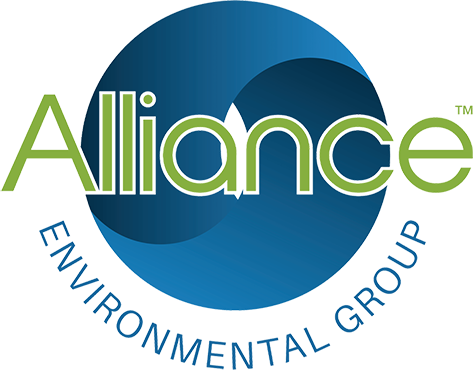Before the 1980s, all kinds of residential paints contained lead, which is a highly harmful toxin. The problem still lingers in older apartments, residential complexes, and even commercial buildings.
The main issue, in recent times, is surrounding the carelessness of people towards lead paint and its adverse effects. The smallest amount of lead can cause health issues because it accumulates in the human body. We know that it’s bad for our health, but not many homeowners actually take the initiative for lead paint removal.
This blog will look at the reason for banning lead paint, the effects of lead paint, and why you need to opt for professional help rather than taking on a DIY project. Read on to gain a thorough understanding of lead paint removal before beginning a home improvement project.
What do you mean by toxic lead?
Lead is a naturally occurring soft blue-greyish metal in the ground. Exposure to lead can cause neurological illnesses and damage to every organ in the body. The popularity of lead in paint comes from multiple reasons. Lead improves the color, longevity, and coverage of paint. It’s more durable, flexible, less prone to cracking, and washable than other metals.
Why was lead paint banned?
Until 1978, paints contain high levels of lead because, unfortunately, people did not know the health hazards. Like any other mineral, lead can distribute inside a person’s system and cause health defects, especially in children. Moreover, kids tend to be susceptible to hand-to-mouth activities, making them more prone to ingesting toxic lead.
Lead was widely used in toys, batteries, walls, water pipes, cosmetics, and residential paints. The government banned the consumer use of lead paint in 1978 to stop the spread. However, older homes containing lead paint and affected soil and air quality, and still pose a significant threat.
What are the effects of lead paint?
Older homes generally have lead-based paints, and even if it is in good condition, there’s always a risk factor involved, which means you need a professional lead abatement service.
Lead poisoning primarily comes from the dust released from deteriorating lead paint. Chipping, flaking, peeling, or chalking paint can crumble into dust, resulting in lead poisoning. When lead particles circulate in the air, it poses severe health risks, especially for pregnant women, children, and unborn babies.
If the lead paint is not chipping away and intact, it’s best to leave it undisturbed. It’s helpful to paint surfaces in good condition with non-lead paint to seal them. Hire a pro to check the severity of the problem and determine the abatement costs.
How to identify if your house contains lead-based paint?
Lead paint can be dangerous and can pose serious health risks to children and adults. First, check to see in what year the house was built. If a house was built before 1970, most likely lead-based paints were used in the making. To be sure, there are specific testing kits available online to determine whether your paint contains lead. These are not always reliable as the older layers of paint can still have lead; however, it’s a helpful indicator.
To get an accurate answer, consult a professional lead abatement company like Alliance Environmental.
Should you attempt to do it yourself?
There are several methods to remove lead-based paint from residential or commercial buildings. However, most of the methods for lead abatement are hazardous and increase the risks of lead poisoning, not vice versa. Dry sanding, scraping, or power sanding can aggravate the issue of lead dust.
Our ultimate goal is safe lead paint removal while creating minimal lead dust and fumes.
For the reason mentioned above, it’s highly unsafe for individuals to take on a lead paint removal project using store-bought supplies. Instead, call a professional lead abatement contractor specializing in the safe removal of lead-based paint. You simply cannot put a price on your long-term health.
A Safer Option
Make sure to select a lead abatement certified company that has all the regulations covered. They must follow strict procedures, and the technicians should be trained for on-site work and use appropriate PPE.
As for the process, a professional crew has adequate specialized equipment to do the job. To reduce the amount of lead dust present in the air, they utilize wet sanding or wet scraping techniques in order to keep the area moist. Safety gear is worn at all times during the process of lead paint removal. Then, the surface is prepared for encapsulation. In the end, the house is vacuumed to remove any remaining lead dust. Finally, the remediated areas are wiped down with water. A certified contractor will recoat the affected surfaces. It’s recommended to test the house for lead-based paint once more after the remediation procedure.
Alliance Environmental is a certified lead paint removal contractor who takes great caution for the operation and its workers. Every worker has the necessary PPE (personal protective equipment) for protection, daily exposure assessments, and yearly blood monitoring for the entire crew.
We strive to offer safe removal and containment of lead dust and site decontamination. The hazardous materials are lawfully disposed of to prevent increased contamination. In addition, we take the help of negative air pressure containments to keep the job sites safe for employees.
Conclusion
Lead paint can be dangerous. Homeowners should not neglect this grave situation and take practical actions to renovate/repair it. you are dealing with asbestos too, ask our professionals about both lead and asbestos removal.
At Alliance Environmental, we adhere to the health and safety standards to carry out lead abatement. For more information on dealing with lead paint, click here to visit our website.



